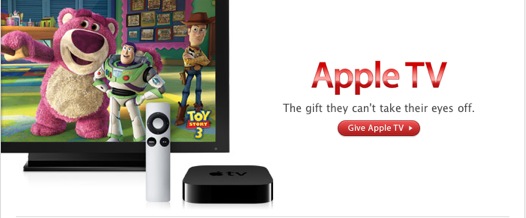做Android开发不免要涉及到编写媒体播放器,对于初学者来说用MediaPlayer实现一个具有基本功能的播放器(有进度条,可以通过进度条上的按钮进行控制)还是有一定难度的,幸好Android还提供了一个VideoView类,借用该类可以快速实现简单的媒体播放功能,其源代码如下(单击右边那个箭头展开):
/** Copyright (C) 2006 The Android Open Source Project** Licensed under the Apache License, Version 2.0 (the "License");* you may not use this file except in compliance with the License.* You may obtain a copy of the License at** http://www.apache.org/licenses/LICENSE-2.0** Unless required by applicable law or agreed to in writing, software* distributed under the License is distributed on an "AS IS" BASIS,* WITHOUT WARRANTIES OR CONDITIONS OF ANY KIND, either express or implied.* See the License for the specific language governing permissions and* limitations under the License.*/package android.widget;
import android.app.AlertDialog;
import android.content.Context;
import android.content.DialogInterface;
import android.content.Intent;
import android.content.res.Resources;
import android.media.AudioManager;
import android.media.MediaPlayer;
import android.media.Metadata;
import android.media.MediaPlayer.OnCompletionListener;
import android.media.MediaPlayer.OnErrorListener;
import android.net.Uri;
import android.os.PowerManager;
import android.util.AttributeSet;
import android.util.Log;
import android.view.KeyEvent;
import android.view.MotionEvent;
import android.view.SurfaceHolder;
import android.view.SurfaceView;
import android.view.View;
import android.widget.MediaController.*;
import java.io.IOException;
import java.util.Map;
/*** Displays a video file. The VideoView class* can load images from various sources (such as resources or content* providers), takes care of computing its measurement from the video so that* it can be used in any layout manager, and provides various display options* such as scaling and tinting.*/public class VideoView extends SurfaceView implements MediaPlayerControl {
private String TAG = "VideoView";
// settable by the clientprivate Uri mUri;
private Map<string, string=""> mHeaders;
private int mDuration;
// all possible internal statesprivate static final int STATE_ERROR = -1;
private static final int STATE_IDLE = 0;
private static final int STATE_PREPARING = 1;
private static final int STATE_PREPARED = 2;
private static final int STATE_PLAYING = 3;
private static final int STATE_PAUSED = 4;
private static final int STATE_PLAYBACK_COMPLETED = 5;
private static final int STATE_SUSPEND = 6;
private static final int STATE_RESUME = 7;
private static final int STATE_SUSPEND_UNSUPPORTED = 8;
// mCurrentState is a VideoView object's current state.// mTargetState is the state that a method caller intends to reach.// For instance, regardless the VideoView object's current state,// calling pause() intends to bring the object to a target state// of STATE_PAUSED.private int mCurrentState = STATE_IDLE;
private int mTargetState = STATE_IDLE;
// All the stuff we need for playing and showing a videoprivate SurfaceHolder mSurfaceHolder = null;
private MediaPlayer mMediaPlayer = null;
private int mVideoWidth;
private int mVideoHeight;
private int mSurfaceWidth;
private int mSurfaceHeight;
private MediaController mMediaController;
private OnCompletionListener mOnCompletionListener;
private MediaPlayer.OnPreparedListener mOnPreparedListener;
private int mCurrentBufferPercentage;
private OnErrorListener mOnErrorListener;
private int mSeekWhenPrepared; // recording the seek position while preparing
private boolean mCanPause;
private boolean mCanSeekBack;
private boolean mCanSeekForward;
private int mStateWhenSuspended; //state before calling suspend()
public VideoView(Context context) {
super(context);
initVideoView();
}public VideoView(Context context, AttributeSet attrs) {
this(context, attrs, 0);
initVideoView();
}public VideoView(Context context, AttributeSet attrs, int defStyle) {
super(context, attrs, defStyle);
initVideoView();
}@Override
protected void onMeasure(int widthMeasureSpec, int heightMeasureSpec) {
//Log.i("@@@@", "onMeasure");int width = getDefaultSize(mVideoWidth, widthMeasureSpec);
int height = getDefaultSize(mVideoHeight, heightMeasureSpec);
if (mVideoWidth > 0 && mVideoHeight > 0) {
if ( mVideoWidth * height > width * mVideoHeight ) {
//Log.i("@@@", "image too tall, correcting");height = width * mVideoHeight / mVideoWidth;
} else if ( mVideoWidth * height < width * mVideoHeight ) {
//Log.i("@@@", "image too wide, correcting");width = height * mVideoWidth / mVideoHeight;
} else {
//Log.i("@@@", "aspect ratio is correct: " +//width+"/"+height+"="+//mVideoWidth+"/"+mVideoHeight);}}//Log.i("@@@@@@@@@@", "setting size: " + width + 'x' + height);setMeasuredDimension(width, height);
}public int resolveAdjustedSize(int desiredSize, int measureSpec) {
int result = desiredSize;
int specMode = MeasureSpec.getMode(measureSpec);
int specSize = MeasureSpec.getSize(measureSpec);
switch (specMode) {
case MeasureSpec.UNSPECIFIED:
/* Parent says we can be as big as we want. Just don't be larger* than max size imposed on ourselves.*/result = desiredSize;
break;
case MeasureSpec.AT_MOST:
/* Parent says we can be as big as we want, up to specSize.* Don't be larger than specSize, and don't be larger than* the max size imposed on ourselves.*/result = Math.min(desiredSize, specSize);
break;
case MeasureSpec.EXACTLY:
// No choice. Do what we are told.result = specSize;
break;
}return result;
}private void initVideoView() {
mVideoWidth = 0;
mVideoHeight = 0;
getHolder().addCallback(mSHCallback);
getHolder().setType(SurfaceHolder.SURFACE_TYPE_PUSH_BUFFERS);
setFocusable(true);
setFocusableInTouchMode(true);
requestFocus();
mCurrentState = STATE_IDLE;
mTargetState = STATE_IDLE;
}public void setVideoPath(String path) {
setVideoURI(Uri.parse(path));
}public void setVideoURI(Uri uri) {
setVideoURI(uri, null);
}/*** @hide*/public void setVideoURI(Uri uri, Map<string, string=""> headers) {
mUri = uri;
mHeaders = headers;
mSeekWhenPrepared = 0;
openVideo();
requestLayout();
invalidate();
}public void stopPlayback() {
if (mMediaPlayer != null) {
mMediaPlayer.stop();
mMediaPlayer.release();
mMediaPlayer = null;
mCurrentState = STATE_IDLE;
mTargetState = STATE_IDLE;
}}private void openVideo() {
if (mUri == null || mSurfaceHolder == null) {
// not ready for playback just yet, will try again laterreturn;
}// Tell the music playback service to pause// TODO: these constants need to be published somewhere in the framework.Intent i = new Intent("com.android.music.musicservicecommand");
i.putExtra("command", "pause");
mContext.sendBroadcast(i);
// we shouldn't clear the target state, because somebody might have// called start() previouslyrelease(false);
try {
mMediaPlayer = new MediaPlayer();
mMediaPlayer.setOnPreparedListener(mPreparedListener);
mMediaPlayer.setOnVideoSizeChangedListener(mSizeChangedListener);
mDuration = -1;
mMediaPlayer.setOnCompletionListener(mCompletionListener);
mMediaPlayer.setOnErrorListener(mErrorListener);
mMediaPlayer.setOnBufferingUpdateListener(mBufferingUpdateListener);
mCurrentBufferPercentage = 0;
mMediaPlayer.setDataSource(mContext, mUri, mHeaders);
mMediaPlayer.setDisplay(mSurfaceHolder);
mMediaPlayer.setAudioStreamType(AudioManager.STREAM_MUSIC);
mMediaPlayer.setScreenOnWhilePlaying(true);
mMediaPlayer.prepareAsync();
// we don't set the target state here either, but preserve the// target state that was there before.mCurrentState = STATE_PREPARING;
attachMediaController();
} catch (IOException ex) {
Log.w(TAG, "Unable to open content: " + mUri, ex);
mCurrentState = STATE_ERROR;
mTargetState = STATE_ERROR;
mErrorListener.onError(mMediaPlayer, MediaPlayer.MEDIA_ERROR_UNKNOWN, 0);
return;
} catch (IllegalArgumentException ex) {
Log.w(TAG, "Unable to open content: " + mUri, ex);
mCurrentState = STATE_ERROR;
mTargetState = STATE_ERROR;
mErrorListener.onError(mMediaPlayer, MediaPlayer.MEDIA_ERROR_UNKNOWN, 0);
return;
}}public void setMediaController(MediaController controller) {
if (mMediaController != null) {
mMediaController.hide();
}mMediaController = controller;
attachMediaController();
}private void attachMediaController() {
if (mMediaPlayer != null && mMediaController != null) {
mMediaController.setMediaPlayer(this);
View anchorView = this.getParent() instanceof View ?
(View)this.getParent() : this;
mMediaController.setAnchorView(anchorView);
mMediaController.setEnabled(isInPlaybackState());
}}MediaPlayer.OnVideoSizeChangedListener mSizeChangedListener =
new MediaPlayer.OnVideoSizeChangedListener() {
public void onVideoSizeChanged(MediaPlayer mp, int width, int height) {
mVideoWidth = mp.getVideoWidth();
mVideoHeight = mp.getVideoHeight();
if (mVideoWidth != 0 && mVideoHeight != 0) {
getHolder().setFixedSize(mVideoWidth, mVideoHeight);
}}};
MediaPlayer.OnPreparedListener mPreparedListener = new MediaPlayer.OnPreparedListener() {
public void onPrepared(MediaPlayer mp) {
mCurrentState = STATE_PREPARED;
// Get the capabilities of the player for this streamMetadata data = mp.getMetadata(MediaPlayer.METADATA_ALL,
MediaPlayer.BYPASS_METADATA_FILTER);
if (data != null) {
mCanPause = !data.has(Metadata.PAUSE_AVAILABLE)
|| data.getBoolean(Metadata.PAUSE_AVAILABLE);
mCanSeekBack = !data.has(Metadata.SEEK_BACKWARD_AVAILABLE)
|| data.getBoolean(Metadata.SEEK_BACKWARD_AVAILABLE);
mCanSeekForward = !data.has(Metadata.SEEK_FORWARD_AVAILABLE)
|| data.getBoolean(Metadata.SEEK_FORWARD_AVAILABLE);
} else {
mCanPause = mCanSeekBack = mCanSeekForward = true;
}if (mOnPreparedListener != null) {
mOnPreparedListener.onPrepared(mMediaPlayer);
}if (mMediaController != null) {
mMediaController.setEnabled(true);
}mVideoWidth = mp.getVideoWidth();
mVideoHeight = mp.getVideoHeight();
int seekToPosition = mSeekWhenPrepared; // mSeekWhenPrepared may be changed after seekTo() call
if (seekToPosition != 0) {
seekTo(seekToPosition);
}if (mVideoWidth != 0 && mVideoHeight != 0) {
//Log.i("@@@@", "video size: " + mVideoWidth +"/"+ mVideoHeight);getHolder().setFixedSize(mVideoWidth, mVideoHeight);
if (mSurfaceWidth == mVideoWidth && mSurfaceHeight == mVideoHeight) {
// We didn't actually change the size (it was already at the size// we need), so we won't get a "surface changed" callback, so// start the video here instead of in the callback.if (mTargetState == STATE_PLAYING) {
start();
if (mMediaController != null) {
mMediaController.show();
}} else if (!isPlaying() &&
(seekToPosition != 0 || getCurrentPosition() > 0)) {
if (mMediaController != null) {
// Show the media controls when we're paused into a video and make 'em stick.mMediaController.show(0);
}}}} else {
// We don't know the video size yet, but should start anyway.// The video size might be reported to us later.if (mTargetState == STATE_PLAYING) {
start();
}}}};
private MediaPlayer.OnCompletionListener mCompletionListener =
new MediaPlayer.OnCompletionListener() {
public void onCompletion(MediaPlayer mp) {
mCurrentState = STATE_PLAYBACK_COMPLETED;
mTargetState = STATE_PLAYBACK_COMPLETED;
if (mMediaController != null) {
mMediaController.hide();
}if (mOnCompletionListener != null) {
mOnCompletionListener.onCompletion(mMediaPlayer);
}}};
private MediaPlayer.OnErrorListener mErrorListener =
new MediaPlayer.OnErrorListener() {
public boolean onError(MediaPlayer mp, int framework_err, int impl_err) {
Log.d(TAG, "Error: " + framework_err + "," + impl_err);
mCurrentState = STATE_ERROR;
mTargetState = STATE_ERROR;
if (mMediaController != null) {
mMediaController.hide();
}/* If an error handler has been supplied, use it and finish. */if (mOnErrorListener != null) {
if (mOnErrorListener.onError(mMediaPlayer, framework_err, impl_err)) {
return true;
}}/* Otherwise, pop up an error dialog so the user knows that* something bad has happened. Only try and pop up the dialog* if we're attached to a window. When we're going away and no* longer have a window, don't bother showing the user an error.*/if (getWindowToken() != null) {
Resources r = mContext.getResources();
int messageId;
if (framework_err == MediaPlayer.MEDIA_ERROR_NOT_VALID_FOR_PROGRESSIVE_PLAYBACK) {
messageId = com.android.internal.R.string.VideoView_error_text_invalid_progressive_playback;
} else {
messageId = com.android.internal.R.string.VideoView_error_text_unknown;
}new AlertDialog.Builder(mContext)
.setTitle(com.android.internal.R.string.VideoView_error_title)
.setMessage(messageId)
.setPositiveButton(com.android.internal.R.string.VideoView_error_button,
new DialogInterface.OnClickListener() {
public void onClick(DialogInterface dialog, int whichButton) {
/* If we get here, there is no onError listener, so* at least inform them that the video is over.*/if (mOnCompletionListener != null) {
mOnCompletionListener.onCompletion(mMediaPlayer);
}}})
.setCancelable(false)
.show();
}return true;
}};
private MediaPlayer.OnBufferingUpdateListener mBufferingUpdateListener =
new MediaPlayer.OnBufferingUpdateListener() {
public void onBufferingUpdate(MediaPlayer mp, int percent) {
mCurrentBufferPercentage = percent;
}};
/*** Register a callback to be invoked when the media file* is loaded and ready to go.** @param l The callback that will be run*/public void setOnPreparedListener(MediaPlayer.OnPreparedListener l)
{mOnPreparedListener = l;
}/*** Register a callback to be invoked when the end of a media file* has been reached during playback.** @param l The callback that will be run*/public void setOnCompletionListener(OnCompletionListener l)
{mOnCompletionListener = l;
}/*** Register a callback to be invoked when an error occurs* during playback or setup. If no listener is specified,* or if the listener returned false, VideoView will inform* the user of any errors.** @param l The callback that will be run*/public void setOnErrorListener(OnErrorListener l)
{mOnErrorListener = l;
}SurfaceHolder.Callback mSHCallback = new SurfaceHolder.Callback()
{public void surfaceChanged(SurfaceHolder holder, int format,
int w, int h)
{mSurfaceWidth = w;
mSurfaceHeight = h;
boolean isValidState = (mTargetState == STATE_PLAYING);
boolean hasValidSize = (mVideoWidth == w && mVideoHeight == h);
if (mMediaPlayer != null && isValidState && hasValidSize) {
if (mSeekWhenPrepared != 0) {
seekTo(mSeekWhenPrepared);
}start();
if (mMediaController != null) {
mMediaController.show();
}}}public void surfaceCreated(SurfaceHolder holder)
{mSurfaceHolder = holder;
//resume() was called before surfaceCreated()if (mMediaPlayer != null && mCurrentState == STATE_SUSPEND
&& mTargetState == STATE_RESUME) {
mMediaPlayer.setDisplay(mSurfaceHolder);
resume();
} else {
openVideo();
}}public void surfaceDestroyed(SurfaceHolder holder)
{// after we return from this we can't use the surface any moremSurfaceHolder = null;
if (mMediaController != null) mMediaController.hide();
if (mCurrentState != STATE_SUSPEND) {
release(true);
}}};
/** release the media player in any state*/private void release(boolean cleartargetstate) {
if (mMediaPlayer != null) {
mMediaPlayer.reset();
mMediaPlayer.release();
mMediaPlayer = null;
mCurrentState = STATE_IDLE;
if (cleartargetstate) {
mTargetState = STATE_IDLE;
}}}@Override
public boolean onTouchEvent(MotionEvent ev) {
if (isInPlaybackState() && mMediaController != null) {
toggleMediaControlsVisiblity();
}return false;
}@Override
public boolean onTrackballEvent(MotionEvent ev) {
if (isInPlaybackState() && mMediaController != null) {
toggleMediaControlsVisiblity();
}return false;
}@Override
public boolean onKeyDown(int keyCode, KeyEvent event)
{boolean isKeyCodeSupported = keyCode != KeyEvent.KEYCODE_BACK &&
keyCode != KeyEvent.KEYCODE_VOLUME_UP &&
keyCode != KeyEvent.KEYCODE_VOLUME_DOWN &&
keyCode != KeyEvent.KEYCODE_MENU &&
keyCode != KeyEvent.KEYCODE_CALL &&
keyCode != KeyEvent.KEYCODE_ENDCALL;
if (isInPlaybackState() && isKeyCodeSupported && mMediaController != null) {
if (keyCode == KeyEvent.KEYCODE_HEADSETHOOK ||
keyCode == KeyEvent.KEYCODE_MEDIA_PLAY_PAUSE) {
if (mMediaPlayer.isPlaying()) {
pause();
mMediaController.show();
} else {
start();
mMediaController.hide();
}return true;
} else if (keyCode == KeyEvent.KEYCODE_MEDIA_STOP
&& mMediaPlayer.isPlaying()) {
pause();
mMediaController.show();
} else {
toggleMediaControlsVisiblity();
}}return super.onKeyDown(keyCode, event);
}private void toggleMediaControlsVisiblity() {
if (mMediaController.isShowing()) {
mMediaController.hide();
} else {
mMediaController.show();
}}public void start() {
if (isInPlaybackState()) {
mMediaPlayer.start();
mCurrentState = STATE_PLAYING;
}mTargetState = STATE_PLAYING;
}public void pause() {
if (isInPlaybackState()) {
if (mMediaPlayer.isPlaying()) {
mMediaPlayer.pause();
mCurrentState = STATE_PAUSED;
}}mTargetState = STATE_PAUSED;
}public void suspend() {
if (isInPlaybackState()) {
if (mMediaPlayer.suspend()) {
mStateWhenSuspended = mCurrentState;
mCurrentState = STATE_SUSPEND;
mTargetState = STATE_SUSPEND;
} else {
release(false);
mCurrentState = STATE_SUSPEND_UNSUPPORTED;
Log.w(TAG, "Unable to suspend video. Release MediaPlayer.");
}}}public void resume() {
if (mSurfaceHolder == null && mCurrentState == STATE_SUSPEND){
mTargetState = STATE_RESUME;
return;
}if (mMediaPlayer != null && mCurrentState == STATE_SUSPEND) {
if (mMediaPlayer.resume()) {
mCurrentState = mStateWhenSuspended;
mTargetState = mStateWhenSuspended;
} else {
Log.w(TAG, "Unable to resume video");
}return;
}if (mCurrentState == STATE_SUSPEND_UNSUPPORTED) {
openVideo();
}}// cache duration as mDuration for faster accesspublic int getDuration() {
if (isInPlaybackState()) {
if (mDuration > 0) {
return mDuration;
}mDuration = mMediaPlayer.getDuration();
return mDuration;
}mDuration = -1;
return mDuration;
}public int getCurrentPosition() {
if (isInPlaybackState()) {
return mMediaPlayer.getCurrentPosition();
}return 0;
}public void seekTo(int msec) {
if (isInPlaybackState()) {
mMediaPlayer.seekTo(msec);
mSeekWhenPrepared = 0;
} else {
mSeekWhenPrepared = msec;
}}public boolean isPlaying() {
return isInPlaybackState() && mMediaPlayer.isPlaying();
}public int getBufferPercentage() {
if (mMediaPlayer != null) {
return mCurrentBufferPercentage;
}return 0;
}private boolean isInPlaybackState() {
return (mMediaPlayer != null &&
mCurrentState != STATE_ERROR &&
mCurrentState != STATE_IDLE &&
mCurrentState != STATE_PREPARING);
}public boolean canPause() {
return mCanPause;
}public boolean canSeekBackward() {
return mCanSeekBack;
}public boolean canSeekForward() {
return mCanSeekForward;
}}</string,></string,>




